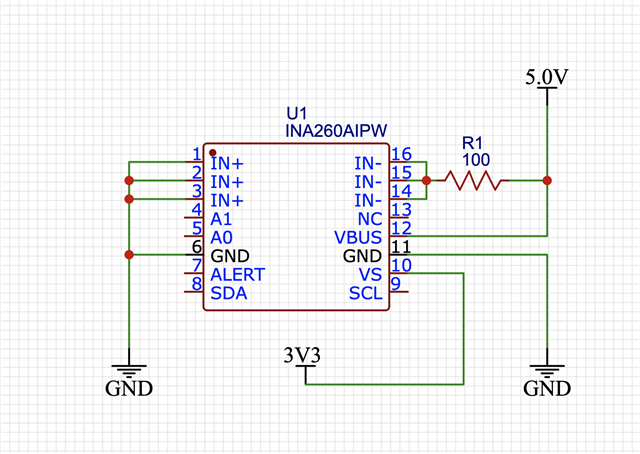I am using an INA260 in an application for power management. I have read the spec sheet, and some of the application notes, and done some experimentation and coding. I would like to make measurements on negative current flow, but I am unclear how this must be done:
In para 8.5.1 the following statement appears:
Because the INA260 supports current measurements in either direction, the returned value for negative currents (currents flowing from IN- to IN+) is represented in two's complement format. Returned values for power will always be positive even when the current is negative.
In Figure 38. Typical Circuit Configuration, INA260:
For current to flow from IN- to IN+, IN- must be biased above IN+. Since the Power Supply connection at IN+ seems to be specified within limits of 0 volts to 36 volts, this would mean that a positive voltage would have to be connected to IN- in order to create the negative current flow described above.
In para 8.6.3, Bus Voltage Register
Para 8.6.3 states Vbus is the voltage measured, and that Vbus is always positive. However, when current is negative (flowing from IN- to IN+), the measured voltage across the shunt is negative. This is where I get lost!! The switching action of the ADC seems to be that it alternately measures shunt voltage drop (related to current) and Vbus-Gnd (used in the Power calculation. But nowhere does it say that Vbus must be connected to the + side of the power supply connected to IN-.
Finally, the questions:
Have I sussed this correctly? In other words: For negative current and power measurements to be valid, is it necessary that Vbus be connected to IN- ?? If not, can you please provide a complete explanation or schematic on how to connect for a negative current measurement?
Also - as a point of curiosity, wouldn't it have been easier to allow Vbus to also take on negative values?
Thanks for your help.
Happy Holidays!
two's complement


